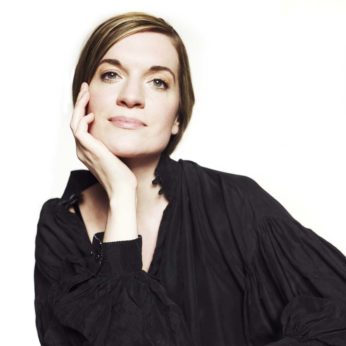Composer: Henry Purcell (b. 1659 - d. 1695)
Performance date: 02/07/2012
Venue: St. Brendan’s Church
Composition Year: 1692 / 1689
Duration: 00:53:11
Recording Engineer: Anton Timoney, RTÉ lyric fm
Instrumentation Category:Large Mixed Ensemble
Instrumentation Other: 2S-solo, 2vn, va, vc, thb, hpd
Artists:
Maria Keohane -
[soprano]
Ruby Hughes -
[mezzo-soprano]
Arte dei Suonatori (Aureliusz Golinski, Ewa Golinska [violins], Anna Nowak [viola], Tomasz Pokrzywinski [cello], Dohyo Sol [theorbo], Joanna Boslak-Gorniok [harpsichord]) -
[baroque ensemble]

In
1698 Henry Playford wrote in the preface to the first collected
volume of Purcell’s songs Orpheus
Britannicus that
Purcell had a
peculiar Genius to express the energy of English Words, whereby he
mov’d the Passions of all his Auditors. This
programme presents a selection of songs from two of Purcell’s best
known operatic works, their different themes wrought together through
their shared evocation of tragedy and deft plumbing of the depths and
heights of human emotion.
The
restoration of Charles II to the throne in 1660 heralded the
reopening of public theatres closed during the Protectorate. In
London there were two companies licensed to produce legitimate
drama, and it was
with one of these, The United Company, that Purcell worked to produce
The Fairy Queen
for the Queens Theatre.
During
the restoration period there was a trend towards a new type of
theatre, mixing dramatic narrative with elements of the Tudor masque
and a greater amount of music than was customary. These new
‘semi-operas’, as they were to become known, were initially a source
of confusion for regular theatre and concert goers who saw a flaw in
this newfangled mix; For
some that would come to the play hated the musick, and others that
were very desirous of the musick, would not bear the interruption
that so much speech gave, so that it is best to have either by itself
intire.
The
Fairy Queen is an
adaptation of Shakespeare’s Midsummer Nights Dream with Singing,
Dancing and Machines interwoven, after the manner of an Opera.
Under the pen of an unknown librettist, none of Shakespeare’s
original words survived in the new setting. Instead the language and
plot were tamed, reworked to conform to contemporary social
sensibilities, stripped of bawdy or uncouth connotations. This is
perhaps the main reason that many audiences are more familiar with
Purcell’s music in isolation, its inventiveness, majesty and pathos
contrasting so starkly with the setting of its production.
It
is an ideal example of a semi-opera,
the music and
dramatic dialogue neatly compartmentalised.
Rather
than assisting the development of narrative, the music is a creative
extension of the play. The writer bound all the musical episodes to
the fairy masques, using the characters conjured up by Titania and
Oberon as flights of fancy and accompaniments to the spectacle of
stage machinery. This was characteristic of the music in the theatre
and semi-operas of the time, where to preserve an atmosphere of
realism, music was confined to ‘natural’ characters, such as drunks,
priests and peasants.
The
only surviving libretto for Dido
and Aeneas tell us
that it was Perform’d
at Mr. Josias Priest’s Boarding School at Chelsey By Young
Gentlewomen in 1689.
There has been much speculation that this was not the first
performance and it could have been composed as early as 1684. There
are no further recorded performances during Purcell’s life time,
and further performances are not recorded until the early 1700’s,
after Purcell’s death. The earliest complete notation is dated c1750
although some of the songs can be found in the volumes of Orpheus
Britannicus.
Unlike
The Fairy Queen and
Purcell’s later theatrical writing the entire narrative of Dido
and Aeneas is
carried in song, a form unique in contemporary English theatre.
Another prominent feature and oft neglected facet of early Dido
and Aeneas
performances is that every section concluded with a separate dance in
the French ballet-opera tradition. The school master Mr Josias Priest
was himself a notable dancing master and no doubt had significant
input into the original choreography and form of the work.
Nahum
Tate’s libretto is loosely based on John Dryden’s translation of
Virgil’s Aeneid, depicting the tragic tension between Aeneas, whose
god given destiny is to found the new state of Rome, and Dido Queen
of Carthage, who must remain behind, eventually taking her life in
sorrow as she is spurned by her lover’s ambition.
Copyright © 2024 West Cork Music. All rights reserved.
Designed and developed by Matrix Internet